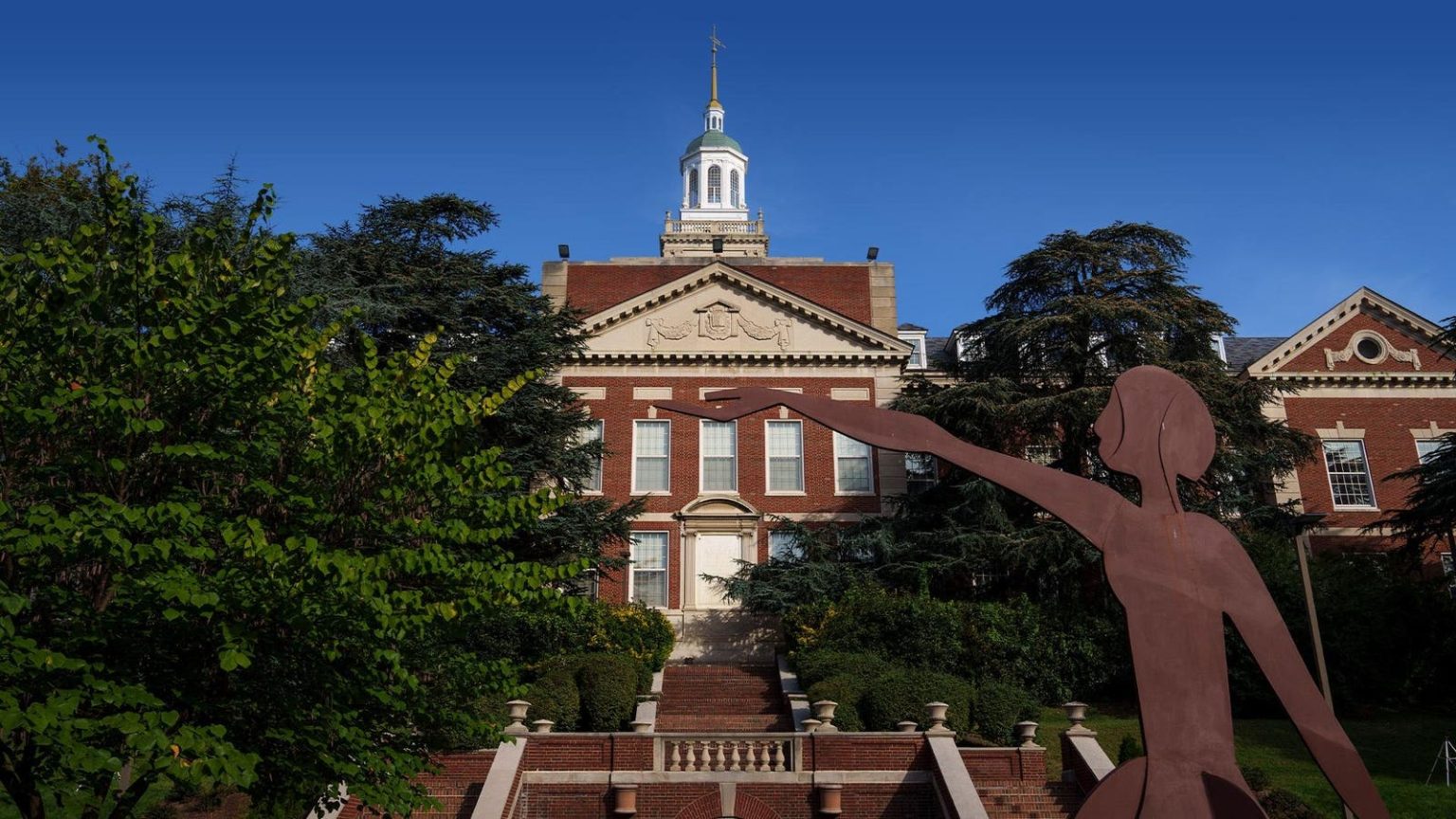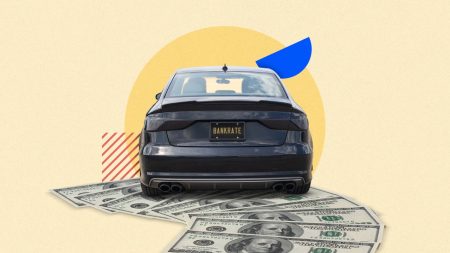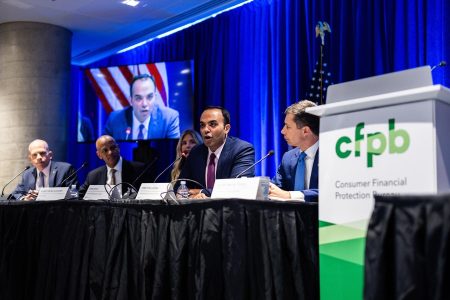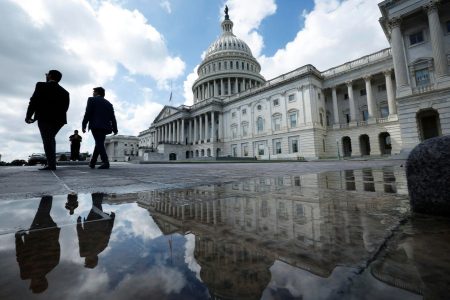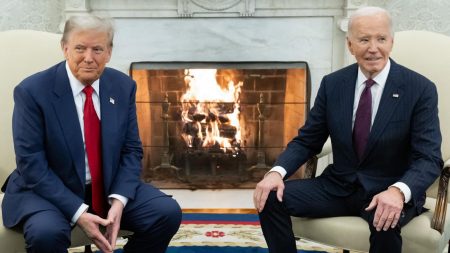The schools have long produced an outsized share of the nation’s Black PhDs, doctors and lawyers. Now, the end of affirmative action and threats to DEI are giving them a new boost.
By Asia Alexander, Contributor
Last summer, before his senior year of high school, Campbell Johnson had settled on Brown University as his top college choice. Then he tagged along on a visit to Howard University, in Washington, D.C., with an uncle who was considering its law school, and he had a change of heart. This coming fall, Johnson is beginning his freshman year at Howard, planning to major in film. It’s not that he would have felt out of place at Brown, with its predominantly white and Asian enrollment. After all, he was one of few Black students in the graduating class of his small private high school, Oakstone Academy in Westerville, Ohio, where he was Valedictorian. But, he says, ‘’I was completely captivated by Howard. The sense of community and the diverse opportunities it offered were simply irresistible.”
Quentin Hawkins is another incoming Howard freshman who had assumed he’d spend four years of college being in the minority–in his case studying mechanical engineering. But the Eugene, Oregon native’s mother had a different idea. “I am the only Black person in my family. My mom is white, and she’s the one who encouraged me to look into HBCUs,’’ he explains. “She said, ‘I’m not going to be able to give you the Black experience you deserve. You need to be around like-minded individuals who can teach you things I can’t.”
Despite an overall decline in college enrollments in recent years, some of the nation’s 107 Historically Black Colleges and Universities (HBCUs) have seen applications and enrollment surge, thanks in part to students like Johnson and Hawkins.
Howard received 37,000 applications, a 12% increase for the incoming class of 2,500 freshmen. Florida A&M University (FAMU), considered the nation’s top public HBCU, has seen applications nearly double over the last two years. As of mid-June, it had gotten 21,939 applications for the incoming freshman class and admitted 3,877–an admissions rate of 18%, which means it’s letting in a lower percentage of applicants than the University of Florida, which Forbes recently named to its list of 20 New Ivies.
And it’s not only big, high profile HBCUs seeing impressive application and enrollment gains. Edward Waters University in Jacksonville, Florida, an HBCU affiliated with the African Methodist Episcopal Church with a current enrollment of just 1,175, received 10,457 applications for the incoming freshman class, up 161% since 2019. Its enrollment climbed during the pandemic to its highest level in 15 years. Jennifer Price, vice president of enrollment management at the school, describes Edward Waters as having entered a cycle where a growing student body helps it “reputation and influence to grow, creating a positive feedback loop that attracts even more high-quality applicants in the future.”
Edward Waters isn’t the only HBCU coming back from an enrollment slump. The share of Black college and university students attending HBCUs fell dramatically from 18% in 1976 to a low of 8% in 2014. During that period, overall Black enrollment in higher education more than doubled, while the student count at HBCUs slowly shrank. (As of 2022, 76% of the nearly 290,00 students enrolled at HCBUs identified as Black.)
But applications to HBCUs spiked after the May 2020 murder of George Floyd by Minneapolis police. Now, the Supreme Court’s June 2023 decision barring race-conscious admissions to colleges and the rapid dismantling of Diversity, Equity, and Inclusion (DEI) policies at state universities in 23 states appear to be giving HBCUs a further boost.
Dr. William E. Hudson, vice president of Student Affairs at FAMU, also credits heightened media attention and the backing of celebrity donors for generating interest among prospective students. He points, as an example, to Lebron James, who outfits FAMU’s teams with athletic gear and has even lent his name to a special limited line of Nike sneakers with FAMU orange trim. “With influential figures showcasing the success of HBCUs, it’s no surprise that students are drawn in,’’ he says.
While HBCUs have historically been short changed when it comes to funding, the surge in interest in them has been accompanied by an uptick in money from both billionaire donors and the government. This past January, billionaire Ronda Stryker and her husband William Johnston announced a $100 million gift (mostly for a scholarship endowment) to Spelman College in Atlanta, an elite HBCU for women, where Stryker has long served on the board. (The school described it as the largest gift ever made to an individual HBCU.) In 2020, billionaire philanthropist MacKenzie Scott gave $560 million to 22 Black colleges, the United Negro College Fund (UNCF), and the Thurgood Marshall College Fund, which raises money for public HBCUs. The same year, Netflix Chairman and cofounder Reed Hastings and his wife, Patricia Ann Quillin, split $120 million among the UNCF, Spelman and Morehouse College, while Bloomberg CEO Michael Bloomberg pledged $100 million to support student aid at the four historically Black medical schools.
On the federal level, the Biden Administration says it has invested $16 billion in HBCUs from Fiscal Year 2021 through FY 2024, including $4 billion in Covid relief legislation and $4 billion in financial aid for HBCU students, who qualify for Pell Grants (for those from low and moderate income families) at twice the rate of students at colleges overall.
But the HBCUs still lag when it comes to facilities, endowments and scholarship money–a fact which deters some students who might otherwise attend them. Growing up in Tallahassee, Lekayla Griffin had her heart set on attending FAMU. Instead, she’s now a senior majoring in media communications and information at Florida State University (FSU), because it offered her a special scholarship for first-generation and lower-income students. “I was definitely sad about not going to FAMU,” she says. “Luckily, as a first-generation and lower-income student, I was given the chance to attend a top university I could also afford.”
FAMU’s Hudson says HBCUs need more corporate support for scholarships and points to the crucial role they play in producing science and technology graduates. FAMU itself graduates a stunning 60% of all the Black pharmacists in the nation.
In fact, a key part of the HBCUs’ appeal has always been not just a more inclusive atmosphere, but results. According to the White House, the schools have educated 40% of all Black engineers in the county, 50% of all Black lawyers, 70% of Black doctors and an astonishing 80% of Black judges. Among those lawyers: Vice President Kamala Harris, who attended Howard as an undergraduate.
In 2022, the National Science Foundation looked at the undergraduate alma mater of all 24,689 Black U.S. doctoral recipients between 2010 and 2020. Of 21,851 who earned their bachelors at a U.S. college that could be identified, 31% attended an HBCU. Howard was the top alma mater with 403 grads who went on to earn PhDs, comparatively tiny Spelman was second with 383 and FAMU came in third with with 340. The top non-HBCU–tied for eighth with Morehouse College–was the University of Maryland, with 218 Black graduates who went on to earn PhDs that decade.
“I believe HBCUs are finally getting the recognition they deserve. We are being looked at for the excellent education and environment we produce,’’ says Michael A. Bailey, executive director of undergraduate admissions and transfer services at North Carolina Central University. He also credits online sites like the Common Black Application (which allows students to apply to 66 different HBCUs for one $20 fee) and Niche, as well as the College Board for recent increases in applications. “These tools enable us to pique the interest of high-caliber students, ultimately bolstering our admissions,’’ says Bailey.
Along with prospective students, companies are increasingly seeking out HBCUs as a talent pipeline. Since 2022, IBM, has worked with 20 HBCUs across 11 states to establish Cybersecurity Leadership Centers that provide free access to IBM coursework and professional certifications, as well as connections for internships and jobs. Alphabet has set up a “Grow with Google” program that works with HBCU career offices in an attempt to diversify the pool of Black tech workers. United Airlines has partnered with Delaware State University, Elizabeth City State University, and Hampton University, while Delta and Southwest have teamed up with Hampton and Texas Southern University, respectively, to address the lack of racial diversity among airline employees.
When you think about it, it’s not so surprising that more Black students are gravitating to HBCUs–as a place where they feel welcomed. Most of these schools were founded in the mid and late-1800s when Black students were generally excluded from most other public and private colleges. While the Supreme Court’s 1954 Brown v Board of Education decision outlawing segregation in public schools logically including universities, it wasn’t until decades later that predominantly white schools became truly welcoming. In 1978, the Supreme Court ruled in Bakke that while racial quotas are unconstitutional, race could still be used as one of many factors in the admissions process to enhance diversity.
But last year the Supreme Court overturned Bakke and now a range of programs aimed at fostering diversity on campus are ending or threatened. In that climate, says Edward Waters’ Price, “There is a growing recognition of the unique cultural and educational experience that HBCUs offer. These institutions provide a supportive and nurturing environment where students can thrive academically and personally, surrounded by peers, staff, and faculty who understand their backgrounds and experiences.”
Seen through an historic lens, the current attack on DEI at other colleges is particularly off-putting to Black students. “DEI is not some newly concocted idea that emerged from a laboratory in 2022. It encapsulates over 240 years of movement building,” Stacey Abrams, a political activist and former Georgia House Minority leader observed at a recent ForbesBLK Summit in Atlanta. “DEI is about ensuring universal access to the American Dream. This can be achieved through education, economic opportunities, and fair elections. Without diversity and access, we cannot truly achieve the promise of the American Dream.” Abrams herself is a graduate of Spelman, where applications for the incoming class of 2028 were up 13%. She later earned a Master of Public Affairs from the University of Texas and a law degree from Yale.
To be sure, lots of HBCU students aren’t discovering these institutions anew, but following in a family tradition. Janae Cotton, the daughter of two FAMU alumni, grew up in Tallahassee going to the school’s football games. “From a young age, my twin sister and I always knew we wanted to attend FAMU,” says Cotton, who just graduated with a Bachelor of Science in Nursing. Cotton, and her twin, an accounting major, both joined the same Alpha Kappa Alpha Sorority as their mother. “FAMU has truly provided us with the family environment we craved and continues to be a place where we feel at home,’’ she says.
MORE FROM FORBES
Read the full article here







